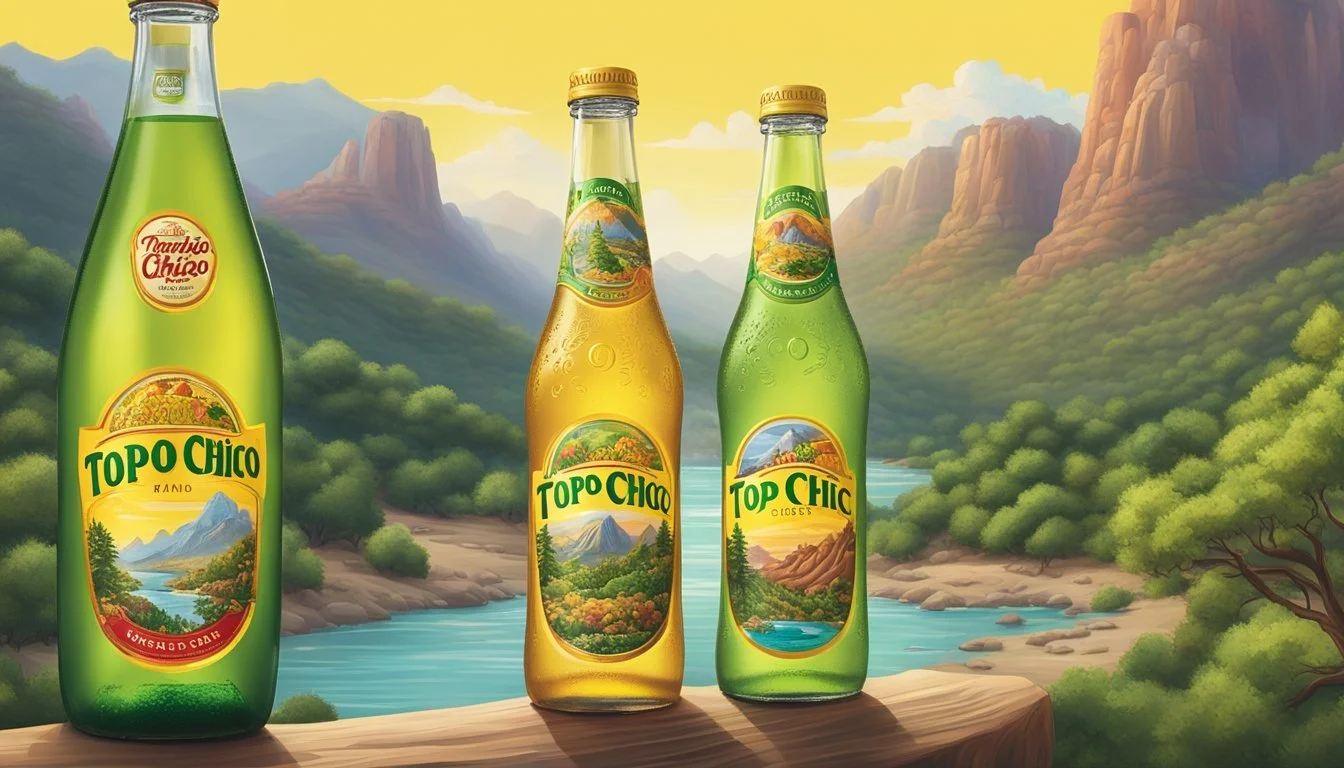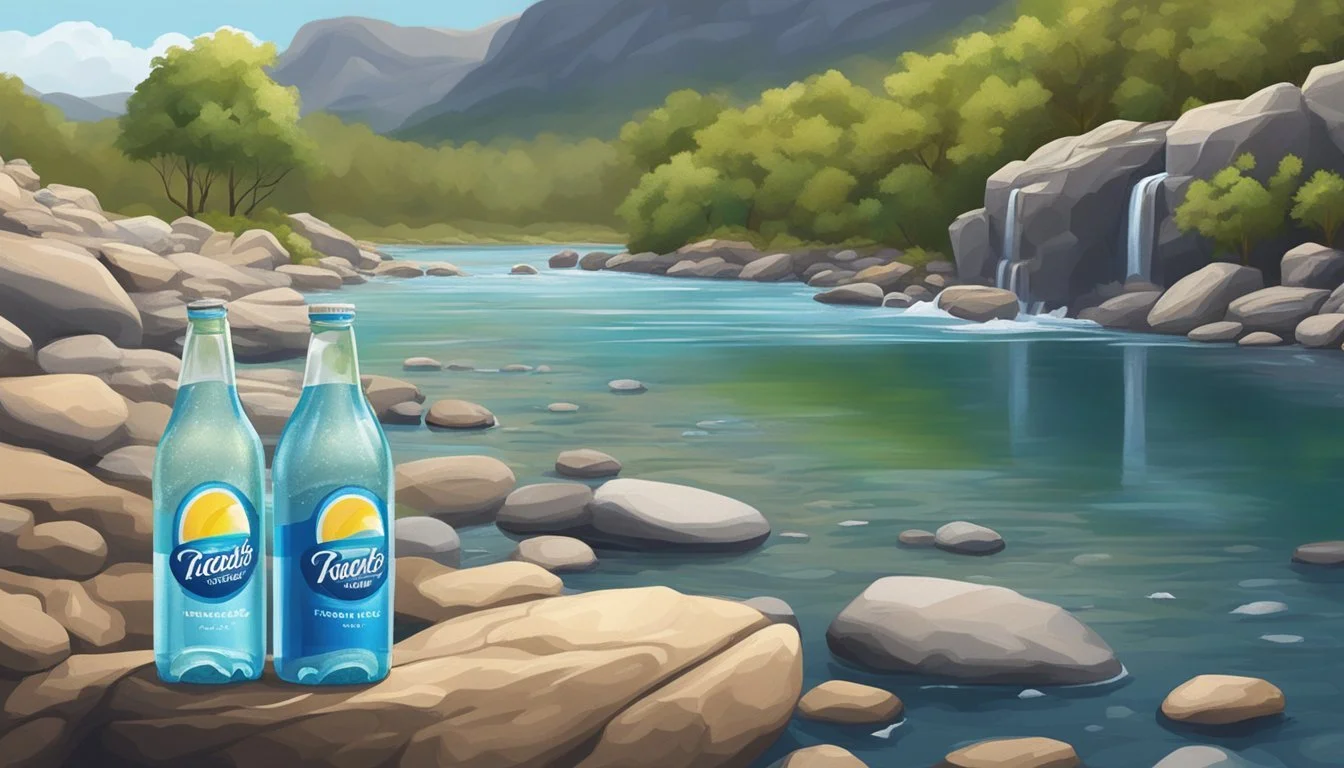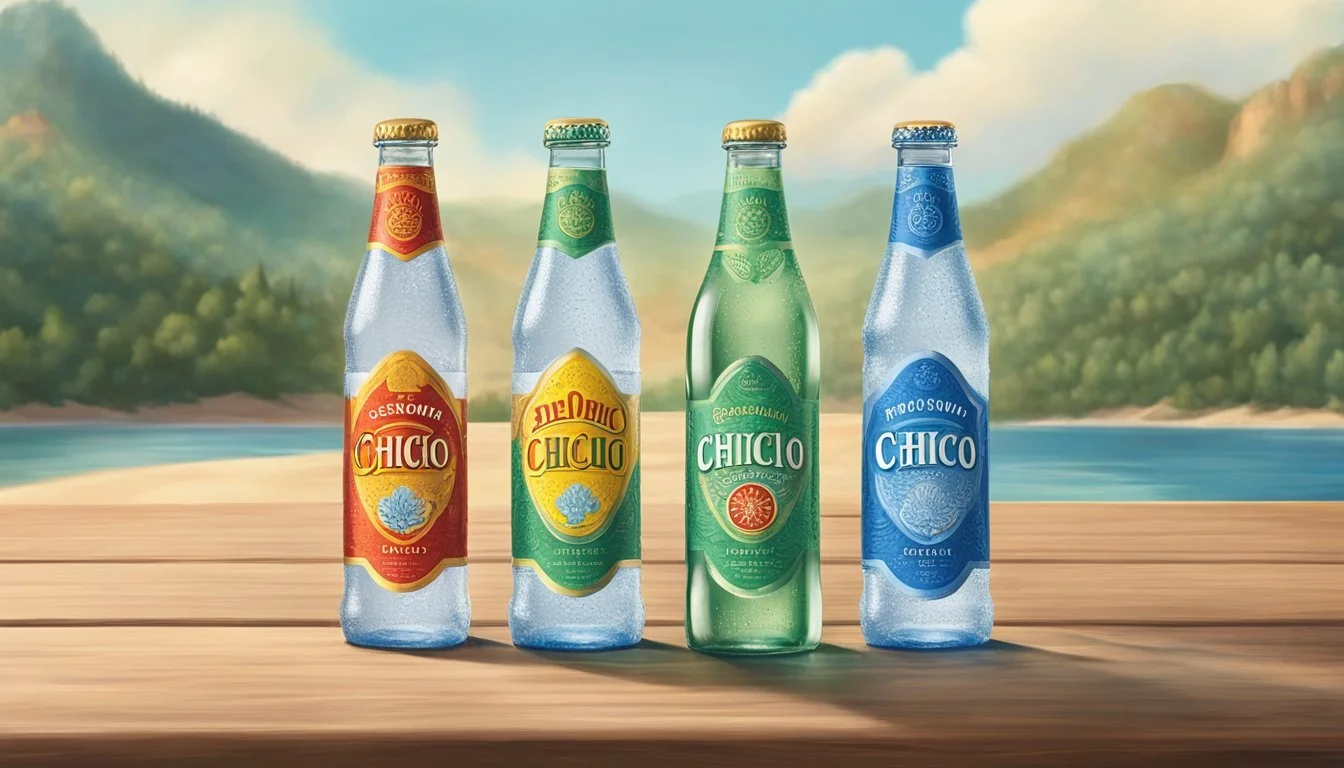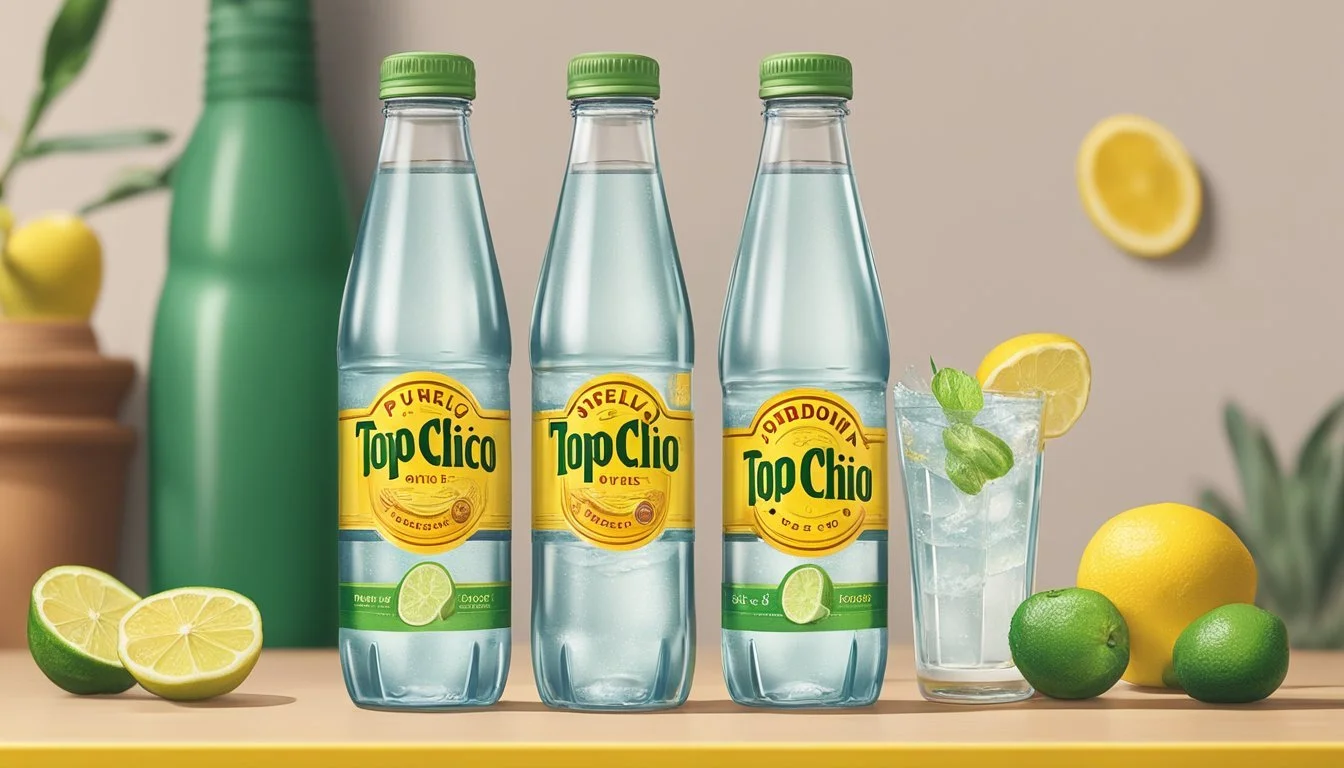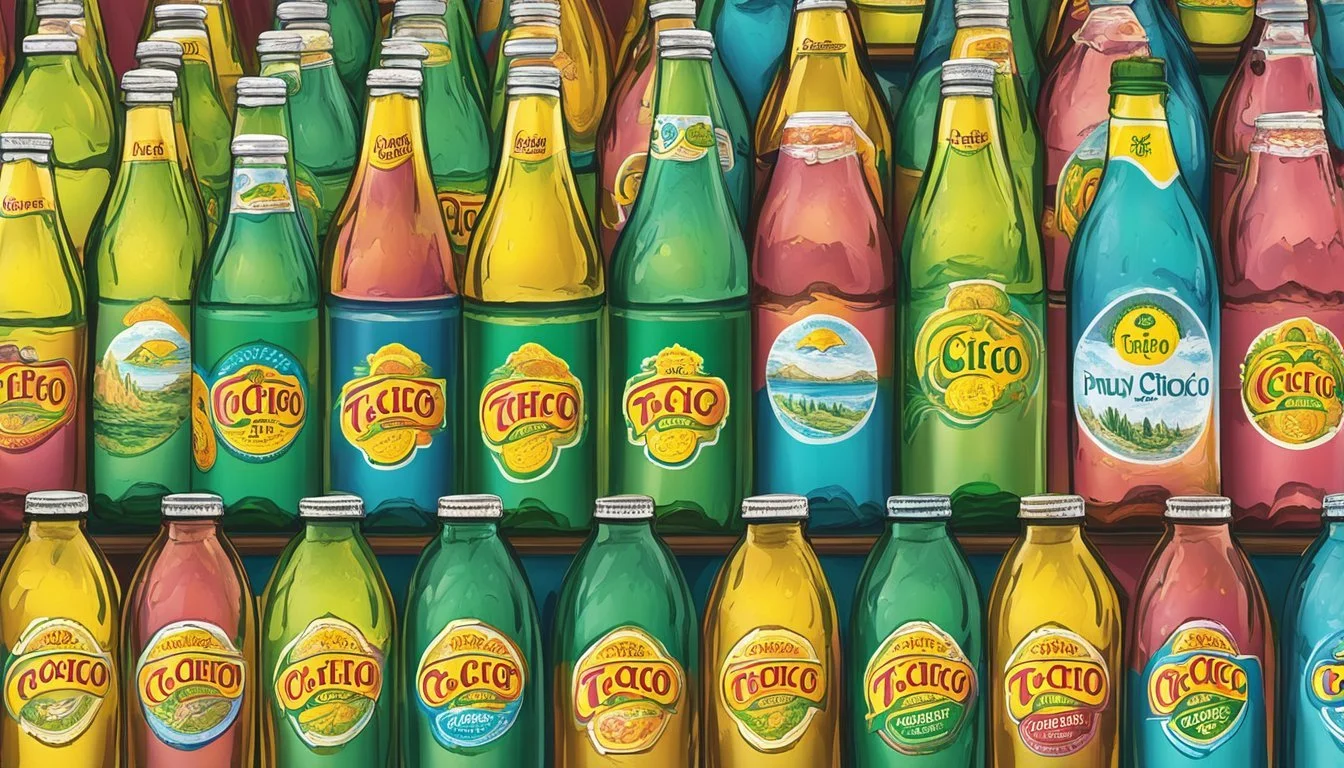Topo Chico vs. Purely Sedona
Comparing Bottled Water Brands
Deciding between Topo Chico and Purely Sedona bottles of water isn't just about quenching thirst; it's about which brand offers the best taste, health benefits, and hydration. Topo Chico, a mineral water from Monterrey, Mexico, has been a staple since 1895 and is known for its crisp, refreshing quality. It has garnered a dedicated following, particularly for its fizzy texture and distinct mineral taste.
Purely Sedona, sourced from the pristine Oak Creek Canyon in Sedona, Arizona, offers a contrasting experience. This spring water prides itself on its purity and naturally balanced mineral content, appealing to those who prioritize a clean, smooth flavor with no aftertaste. For those prioritizing purity and a smooth flavor, Purely Sedona might come out on top, while Topo Chico remains the choice for those who enjoy a more vibrant, mineral-rich taste.
Both brands excel in different aspects of taste and health benefits. Topo Chico faced scrutiny in recent years for containing higher levels of certain chemicals, though efforts have been made to reduce these. Purely Sedona's commitment to maintaining natural purity highlights its dedication to health-conscious consumers. The decision ultimately hinges on individual preference for either the effervescent appeal of a mineral water like Topo Chico or the clean, pure refreshment provided by Purely Sedona.
Brand History and Origins
Topo Chico has a significant history tied to its namesake spring and historic bottling location, while Purely Sedona draws its unique profile from the geological features of Sedona, Arizona.
Cerro Del Topo Chico Spring
Topo Chico sources its water from the Cerro del Topo Chico Spring. Located at the base of the mountain, Cerro del Topo Chico, in Monterrey, Mexico, this spring has been a reliable source since 1895.
The unique mineral composition of the spring contributes to Topo Chico's distinctive taste. Historically, the spring has been regarded for its supposed health benefits, making it a popular choice among residents and visitors alike. This longstanding heritage underpins Topo Chico's reputation and authenticity.
Monterrey as a Bottling Landmark
Monterrey, Mexico, is not only the location of the Cerro del Topo Chico Spring but also a key bottling site for Topo Chico. Since its beginnings in 1895, Monterrey has seen the brand grow from a local favorite to an internationally recognized name.
In 2017, The Coca-Cola Company acquired Topo Chico, bringing even greater visibility to the Monterey-bottled brand. Monterrey’s status as a bottling landmark is a testament to its strategic importance and historical value to Topo Chico. The city’s infrastructure and historical connection facilitate the brand's ongoing legacy and distribution.
Water Source and Composition
Topo Chico and Purely Sedona differ significantly in their sources and mineral compositions, which can influence taste and health benefits.
Mineral Composition Evaluation
Topo Chico is known for its sparkling mineral water, drawing its source from Monterrey, Mexico. Its mineral content includes sodium, calcium, magnesium, and bicarbonate, contributing to its crisp, slightly tangy taste. Topo Chico's mineral profile gives it a unique composition beneficial for replenishing electrolytes.
Purely Sedona sources its water from the natural springs in Sedona, Arizona. It offers a more neutral pH, approximately 7, minimizing acidity. Its natural mineral content includes modest amounts of calcium, magnesium, and potassium, making it a milder option for hydration without strong mineral flavors.
Mineral Topo Chico (mg/L) Purely Sedonad (mg/L) Sodium Varies Low Calcium Rich Moderate Magnesium Moderate Moderate Bicarbonate High Low pH Level Slightly Acidic Neutral
Each brand’s mineral composition reflects its unique geological origins, impacting both flavor and potential health benefits.
Health and Safety Considerations
When comparing Topo Chico and Purely Sedonad bottled waters, understanding their health and safety considerations is essential. Both options are popular, but consumers must be aware of chemical contaminants like PFAS and their regulatory implications.
Understanding PFAS Chemicals
PFAS (polyfluoroalkyl substances) are synthetic chemicals used in various consumer products for their resistance to heat, water, and oil. These chemicals have raised health concerns because they do not break down in the environment and can accumulate in the human body over time.
Exposure to PFAS has been associated with adverse health effects such as cancer, liver damage, decreased fertility, and increased cholesterol levels. Topo Chico has been identified as containing higher levels of PFAS compared to other brands. Purely Sedonad’s safety concerning PFAS is not explicitly highlighted in recent findings, making it essential to consider available data carefully.
FDA and Consumer Reports Findings
The Food and Drug Administration (FDA) and Consumer Reports play vital roles in monitoring and reporting on the safety of bottled water. Recent reports found that Topo Chico had significant PFAS levels, though efforts have been made to reduce them by more than half.
Despite these efforts, the levels remain concerning for some health experts. Consumer Reports suggest comparing PFAS levels across brands, and in several cases, brands like Sanpellegrino and Dasani showed much lower PFAS levels than Topo Chico. The FDA sets guidelines and enforces regulations to ensure water safety, focusing on contaminants like PFAS and heavy metals like lead. Both Topo Chico and Purely Sedonad must comply with these regulations to stay on the market.
Understanding how each brand aligns with these guidelines helps in making an informed choice about bottled water.
Physical Properties and Taste Profile
The comparison of Topo Chico and Purely Sedonad revolves around their unique physical properties and taste profiles, highlighting carbonation and flavor intricacies. Each brand offers distinct drinking experiences suited to different preferences.
Carbonation and Bubbly Appeal
Topo Chico is renowned for its high level of carbonation, delivering a strong, effervescent experience. The bubbles are fine and consistent, contributing to a crisp taste that many sparkling water enthusiasts appreciate. The robust carbonation remains intact even after the bottle has been opened for a while, maintaining its bubbly appeal.
Purely Sedonad, in contrast, offers a more subdued carbonation. The bubbles are smaller and less aggressive, providing a gentler and smoother drinking experience. This makes it an ideal choice for those who prefer mild effervescence or use sparkling water as a mixer. Unlike the intense sparkle of Topo Chico, Purely Sedonad’s carbonation level is more similar to naturally sparking mineral waters, offering a balanced fizzy sensation.
Flavor Profiles and Additives
Topo Chico's flavor profile is especially crisp and clean, often described as having a subtle mineral edge. It is available in variations with a twist of lime, enhancing the natural taste without the need for sweeteners or additives. These flavored versions remain sugar-free, making them a good option for those who enjoy a hint of citrus without the extra calories.
Purely Sedonad focuses on the purity of its source, with a neutral and refreshingly clean taste. The emphasis is on maintaining the natural mineral content, which imparts a slight but pleasant flavor. Unlike Topo Chico, Purely Sedonad does not typically offer flavored variants, sticking to a straightforward, no-additive approach. This makes it a preferred choice for consumers looking for a pure hydration option without any added flavorings.
Each brand has cultivated a distinct taste experience, catering to varied consumer preferences for sparkling water with different levels of effervescence and flavor complexity.
Packaging and Sustainability
Topo Chico and Purely Sedonad prioritize different packaging materials, reflecting their approaches to sustainability and environmental impact. Topo Chico uses plastic and aluminum, while Purely Sedonad leans towards glass bottles and boxed water solutions.
Glass Versus Plastic Debate
Purely Sedonad emphasizes glass bottles, which are recyclable and have a lower environmental impact compared to plastic. Glass can be reused multiple times and is less likely to release harmful chemicals into the environment.
Topo Chico primarily uses plastic bottles, which remain a concern due to potential environmental damage. Although plastic is lightweight and convenient, it contributes significantly to pollution if not properly recycled.
Aluminum is another option Topo Chico employs. While recyclable, aluminum production still has environmental costs.
Environmental Protection Agency Standards
Purely Sedonad aligns its packaging efforts with EPA standards to minimize environmental harm. Using glass bottles and boxed water adheres to guidelines aimed at reducing plastic waste and promoting recyclability.
Topo Chico has faced scrutiny regarding PFAS levels in their packaging. They have made strides in lowering these levels but continue to work towards meeting safe drinking standards.
Reducing PFAS levels is crucial for public health and environmental protection. Topo Chico's effort to align with these standards showcases a commitment to improving their product's safety and sustainability.
Consumer Experience and Preferences
Consumer experiences reveal significant insights into market trends and brand loyalty. They are often influenced by factors such as quality, taste, and brand image.
Market Trends and Consumption Habits
Topo Chico and Purely Sedonad cater to distinct markets. Topo Chico, a sparkling mineral water, appeals largely to consumers who enjoy fizzy beverages. Its recent move to reduce PFAS levels highlights consumer reports and safety standards.
Purely Sedonad, on the other hand, attracts those valuing natural mineral content, with its niche in authenticity. The growing trend towards health-consciousness drives its market as consumers seek alkaline options. Both brands benefit from the increasing awareness around health and environmental concerns, affecting their consumption patterns.
Brand Loyalty and Community
Topo Chico boasts a strong cult following, with loyal customers drawn to its distinctive taste and effervescence. This loyalty persists despite past concerns with chemical content, indicating strong brand resilience.
Purely Sedonad has built a smaller yet dedicated community focused on natural sourcing and high-quality mineral water. These consumers prioritize purity and often exhibit long-term loyalty. Brand loyalty in both cases is influenced by product reliability, quality, and the overall drinking experience, making it a central aspect of consumer preferences.
Comparative Analysis
Topo Chico and Purely Sedonad both offer their unique attributes, fitting well within the competitive bottled water market. Their competitive positioning and distinctive features make them stand out among sparkling water brands.
Competitive Standing Among Sparkling Water Brands
Topo Chico is renowned for its mineral-rich sparkling water, competing with Perrier, San Pellegrino, and LaCroix. Its long history and strong market presence have made it a preferred choice among consumers seeking premium carbonated options.
Purely Sedona, although less established, focuses on premium quality and purity. While it is not as widely recognized as Topo Chico, it appeals to those prioritizing health benefits and hydration. This brand aims to offer uncompromised quality, targeting a niche yet discerning audience.
Unique Selling Points and Differentiators
Topo Chico stands out for its high mineral content and crisp carbonation, delivering a refreshing and unique taste. Its sourcing from Monterrey, Mexico adds to its exotic appeal. Topo Chico has also reduced PFAS levels, aligning with health-conscious trends.
Purely Sedona emphasizes its natural purity and pH balance, setting itself apart in terms of hydration effectiveness. It is marketed as a premium choice, offering bottled water free from contaminants, appealing to health-conscious consumers who prioritize safety and overall quality.
Both brands cater to different preferences, with Topo Chico focusing on taste and mineral benefits, while Purely Sedona highlights hydration and purity.
Legal and Regulatory Considerations
Both Topo Chico and Purely Sedona must adhere to strict legal and regulatory standards to ensure product safety and quality for consumers. This section examines their compliance with bottling regulations and any historical legal challenges they have faced.
Compliance With Bottling Regulations
Topo Chico and Purely Sedona are required to meet Food and Drug Administration (FDA) regulations that set safety and quality standards for bottled water. These regulations cover aspects such as permissible contaminant levels, labeling requirements, and processing practices.
Both brands also align with guidelines from the International Bottled Water Association (IBWA), which often exceed FDA standards. Consumer reports show that recent improvements have been made, especially in reducing harmful substances like PFAS in Topo Chico.
Historical Legal Challenges
Topo Chico faced scrutiny in 2020 for having higher levels of PFAS chemicals than recommended. A class-action lawsuit highlighted consumer concerns over these "forever chemicals." Coca-Cola, the parent company, responded by reducing the PFAS levels significantly.
Purely Sedona has maintained a relatively clean legal history without major publicized legal battles. Their focus on natural sourcing and transparency has helped build consumer trust and avoid regulatory disputes.
Market Presence and Accessibility
Topo Chico and Purely Sedona differ significantly in their market presence and accessibility. Topo Chico benefits from the backing of Coca-Cola, while Purely Sedona focuses more on eco-friendly practices and niche markets.
Distribution Channels and E-commerce
Topo Chico benefits from Coca-Cola's extensive distribution network, making it available in major supermarkets, convenience stores, and online platforms like Amazon. This helps ensure a wide and consistent market presence.
Purely Sedona, although less ubiquitous, leverages e-commerce effectively. It emphasizes online sales through its website and platforms like Amazon. This allows it to reach consumers who prioritize environmentally conscious products.
Both brands are easily accessible but target different consumer bases.
Brand Acquisition and Corporate Influence
Coca-Cola acquired Topo Chico, enhancing its market reach and solidifying its position among premium mineral waters. This acquisition brings marketing strength and resource allocation that smaller brands often lack.
In contrast, Purely Sedona operates primarily as an independent brand focused on purity and sustainability. While it lacks the corporate backing of giants like Coca-Cola, this often appeals to a demographic wary of large corporations.
These different strategies impact market presence and consumer trust.
More About Topo Chico
More About Purely Sedona
Aqua Carpatica vs Purely Sedona: Which Bottled Water is Better?
Boxed Water vs Purely Sedona: Which Bottled Water is Better?
Castle Rock vs Purely Sedona: Which Bottled Water is Better?
Core Hydration vs Purely Sedona: Which Bottled Water is Better?
Hawaii Volcanic vs Purely Sedona: Which Bottled Water is Better?
Hawaiian Springs vs Purely Sedona: Which Bottled Water is Better?
Ice Mountain vs Purely Sedona: Which Bottled Water is Better?
Icelandic Glacial vs Purely Sedona: Which Bottled Water is Better?
Mountain Valley Spring Water vs Purely Sedona: Which Bottled Water is Better?
Nestle Pure Life vs Purely Sedona: Which Bottled Water is Better?
Poland Spring vs Purely Sedona: Which Bottled Water is Better?
Purely Sedona vs Cascade Mountain: Which Bottled Water is Better?
Purely Sedona vs Crystal Geyser: Which Bottled Water is Better?
Purely Sedona vs Crystal Lake: Which Bottled Water is Better?
Purely Sedona vs Essence pH10: Which Bottled Water is Better?
Purely Sedona vs Kirkland Signature: Which Bottled Water is Better?
Purely Sedona vs Liquid Death: Which Bottled Water is Better?
Purely Sedona vs Proud Source: Which Bottled Water is Better?
Purely Sedona vs Richard's Rainwater: Which Bottled Water is Better?
Purely Sedona vs Simple Truth: Which Bottled Water is Better?
Purely Sedona vs Talking Rain AQA: Which Bottled Water is Better?
Purely Sedona vs Weird Water: Which Bottled Water is Better?
Purely Sedona vs Whole Foods 365: Which Bottled Water is Better?
Purely Sedona vs Whole Foods Italian Still Mineral water: Which Bottled Water is Better?
San Pellegrino vs Purely Sedona: Which Bottled Water is Better?
Solan de Cabras vs Purely Sedona: Which Bottled Water is Better?
Zephyrhills vs Purely Sedona: Which Bottled Water is Better?


